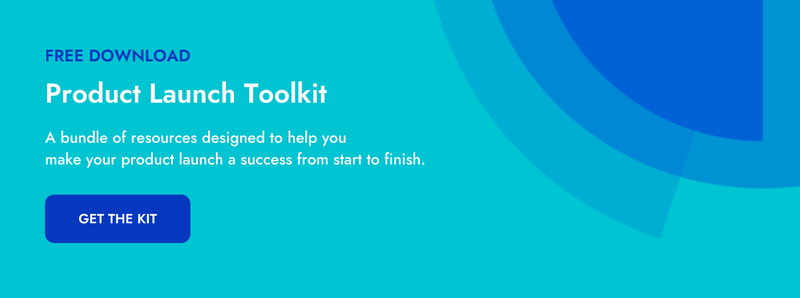Executing a product launch includes many moving parts. Pre-launch, your team needs to have an understanding of your market and be prepared to launch your new product into your space. During launch, your sales team needs to be ready to field any and all questions about your new product so that they can close more deals. Post-launch, your team needs to be prepared to debrief, gather valuable intel from your market, and analyze the success. Let’s take a look at how competitive intelligence can be incorporated into each stage of your product launch.
Pre-launch
Before launching a product, you want to have a clear understanding of your market and the problem your product solves. You need to test market readiness and gain user feedback to gauge how well your product will do within the market. If your competitors already have a similar product, you can compare your user feedback to reviews you find online of your competitors. You will be able to see how your product compares to theirs.
Ready to nail your next launch? Download our Product Launch Toolkit ↓
Here are a few ways that you can gather competitive intelligence data to help you during pre-launch.
-
Conduct Surveys: Whether you’re surveying existing customers or prospects, their intel can be immensely valuable to your launch strategy. You can use survey data to identify trends, discover pain points, use cases, and needs. This information can then be used to benefit your product iteration, customer happiness, and messaging.
-
1:1 Interviews: A bit more personal than a survey, 1:1 interviews with customers can give you a deeper insight that you wouldn’t get from other channels. This data can help you improve your product launch and build out your personas.
-
Create Messaging that Resonates: A great way to build out your launch messaging is by using terms that are already being used by your target customers. Talk to your customers, prospects, or search internet sources to pull out key words or phrases that people are using to describe your product and market. Nothing is going to resonate more with your target customers than their own words.
-
Monitor Market Shifts: You should monitor how your competitors’ products are changing, and how the needs of your customers are changing. As shifts in the market occur, your messaging should change as well. Listen to your market and keep your messaging flexible so that you can adapt to changes.
-
Take Note of Your Competitors’ Product Launches: You can learn a lot for your own launch by breaking down the launches of your competition. Look at what worked well for them, what didn’t work, as well as what they did for content and PR. You can use that intel to improve on your own product launch.
-
Prepare Your Sales Team: Sales enablement tools are critical at all stages of a product launch. For pre-launch, your sales team should have sales enablement tools ready to go so that they are prepared to answer any and all questions when it comes to your product and how it compares to competitors’.
Launch
At the time of the product launch, you’ll want to ramp up your press, marketing, events, and sales enablement efforts. Everything should have been prepared pre-launch, but now, you want to ensure that you’re effectively infiltrating the market with your new product. All of your supporting teams should be prepared for product launch. Let’s take a look at what each team is responsible for at launch and how competitive intelligence plays a role.
-
Marketing Team: Your marketing team should be ready with content, press releases, collateral, and events, whether they be virtual or in person. The messaging across all marketing efforts for your product launch should be carefully crafted, differentiated from your competition, and consistent across all platforms.
-
Product Marketing Team: While product marketing is handling the majority of the work at the time of launch, one key aspect that benefits their supporting teams is the creation of sales enablement materials. Using competitive intelligence data can enrich your sales enablement materials and benefit your sales team when they’re working competitive deals after launch.
-
Sales Team: This is where your team’s sales enablement tools and materials come in. Your sales team should be utilizing the sales enablement tools, engaging with prospects, and getting new customers on board. Having tools such as battlecards and sales scripts will prepare your sales team to take on tough competitive questions in unbiased ways.
Post-launch
After a product is launched, there are a number of key actions to take. Most important, measure the impact of your new product or feature. How did it perform within the market? What are new customers, existing customers, and industry experts saying about your product? Keep a pulse on what users are saying on social media, whether it was directed at your account, or just mentioned on a social media platform. You’ll also want to take another look at review sites and online discussion threads as another source to measure your market’s reaction.
Here are some additional ways competitive intelligence fits into the post-launch stage of a product launch.
-
Seek Customer Feedback: Leverage customer success stories and testimonials as extra marketing resources, especially when you can highlight customers who chose your solution over a competitor’s. Creating case studies or simply sharing the testimonials on your website can give you an edge against your competition.
-
Analyze the Key Metrics: If your product goes head-to-head with a competitor, you should look at how your win rates against your competitor have changed after a launch. Has your win rate increased? Have your competitive losses increased or decreased? Analyze your sales results to see how your success rate against competitors has changed.
-
Track Your Competition: Finally, what are your competitors saying? Are they doing anything in response to your latest product launch? Keep a pulse on your competitors’ actions throughout your entire launch to maintain your competitive advantage.
Competitive intelligence is extremely beneficial for every part of a product marketer’s job, but especially during launch. Pre-launch, launch, and post-launch activities can all be enhanced by integrating lessons from competitive intelligence. When you incorporate competitive intelligence into each stage of your product launch, you are setting up your launch to succeed.

Seeing is believing! Check out Crayon for yourself.
Take a Product TourRelated Blog Posts
Popular Posts
-
 The 8 Free Market Research Tools and Resources You Need to Know
The 8 Free Market Research Tools and Resources You Need to Know
-
 6 Competitive Advantage Examples From the Real World
6 Competitive Advantage Examples From the Real World
-
 How to Create a Competitive Matrix (Step-by-Step Guide With Examples + Free Templates)
How to Create a Competitive Matrix (Step-by-Step Guide With Examples + Free Templates)
-
 24 Questions to Consider for Your Next SWOT Analysis
24 Questions to Consider for Your Next SWOT Analysis
-
 How to Measure Product Launch Success: 12 KPIs You Should Be Tracking
How to Measure Product Launch Success: 12 KPIs You Should Be Tracking



